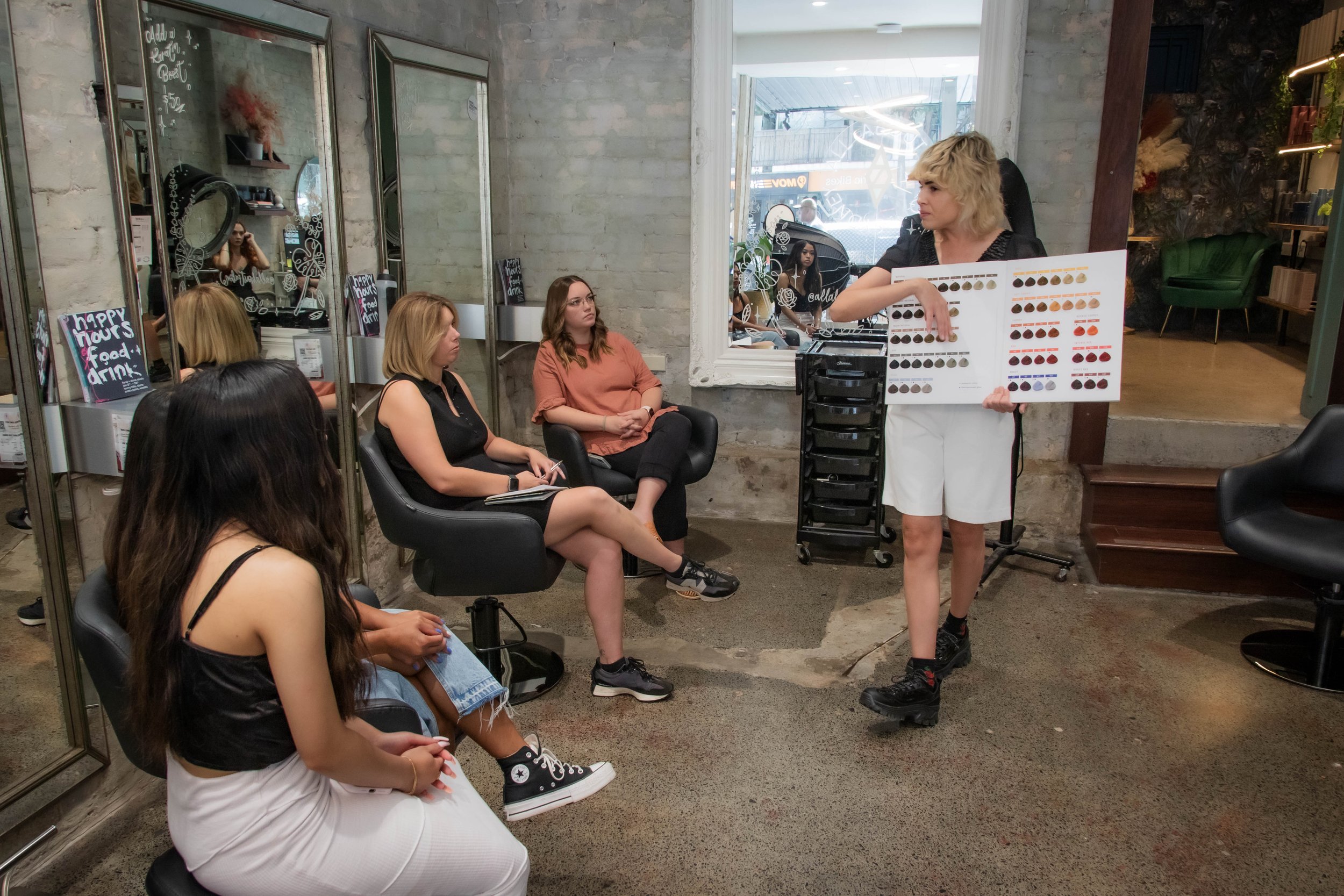Foils vs. Balayage: What You Need to Know
In the vibrant world of hair colour, the quest to achieve the perfect blend of natural-looking highlights and dimensions often leads to a crossroads - choosing between foils and balayage.
Both techniques have carved a niche in the hair colouring realm, but understanding their differences can be the key to unlocking the hair of your dreams.
Read on to learn more about these popular methods of hair colouring.
Key Points
The foil technique isolates strands of hair to apply different tones or highlights, leading to a variety of lightness levels. This method requires regular salon visits to maintain the look and deal with regrowth.
Balayage, a French technique of freehand painting colour onto hair, produces a natural, blended look without using foils. It doesn't have a clear regrowth line, allows the colour to last longer, and requires less frequent salon visits.
The choice between foils and balayage depends on the look one wants to achieve and the level of maintenance they are comfortable with.
While both techniques add beauty and individuality, they can damage the hair; hence, treatments like Olaplex are recommended to restore hair health.
Consultation with an experienced stylist is advised to understand better what technique would suit one's hair texture, length, and health. A stylist can also offer insights best suited to an individual's lifestyle and colouring preferences.
Do you live in Sydney?
Get the perfect look at our salon – schedule your appointment now!
What are Foil Highlights?
Foils are used to isolate strands of hair in order to achieve different colour tones or highlights. The hair strands are placed on a foil sheet, and then a hair colour or lightener is applied, after which the foil is folded to encapsulate the hair and the product.
This technique can achieve varying degrees of lightness, from subtle shifts to dramatic blonde transformations, making it a popular choice for those desiring a significant colour change. Foils can also be used to introduce highlights and lowlights, adding depth and dimension to hair.
Foils do, however, come with a commitment. The clear line of regrowth requires regular salon appointments, usually every six to eight weeks, to maintain the look and prevent a stark contrast between the new growth and coloured hair.
What is the Balayage Colour Technique?
Originating from the French word meaning "to sweep," balayage is a freehand technique where colour is painted onto the hair to create a natural, blended look without using traditional foils.
Balayage's less structured application results in a softer, more blended effect, with highlights that gently merge into your base colour. This technique doesn't just look effortlessly chic; it also boasts longevity.
Since balayage highlights don't start at the scalp, there's no obvious clear line where the colour ends as your hair grows, meaning you can enjoy your colour for longer without needing to rush back to the salon for touch-ups.
Moreover, balayage suits a wide array of hair types and lengths, from straight to curly and short to long. It's a versatile option that can be tailored to your hair's unique needs and your personal style preferences.
Do you live in Sydney?
Get the perfect look at our salon – schedule your appointment now!
Balayage vs. Foils: Which One Would Give You the Look You Want?
Deciding between foils and balayage ultimately comes down to the look you want to achieve and how much maintenance you're willing to undertake.
If you're after dramatic, all-over lightening or precise placement of colour, foil highlights may suit your needs better. They offer a higher level of control, making it easier to achieve lighter shades even on darker hair.
On the other hand, if a natural look with less frequent salon visits sounds appealing, balayage could be your best fit. This technique creates a more diffused transition between colours, offering a more forgiving regrowth and a bespoke colouring experience.
Whether you choose balayage or foils, lightening your hair can damage your strands. To help rebuild and restore your hair's health, it's recommended that you incorporate treatments such as Olaplex into your hair care routine.
This is especially crucial if you're lightening your hair significantly or have a history of colour treatments. Olaplex works by repairing the hair's bonds that are broken during the colouring process, ensuring your locks remain strong, resilient, and shiny.
With this knowledge, you might think you know all you need to know to choose which hair colouring technique is best for you. While that might be true, it's always best to consult an experienced stylist who can provide more insights tailored to your hair's texture, length, and overall health.
Visit All About Salon in Surry Hills, Sydney, to get the expert care your hair deserves. Our stylists will provide you with all the tips and excellent hair services that will surely make you look fabulous.
Final Thoughts on Foils and Balayage
Whether you lean towards the precise and more traditional approach of foils or the free-spirited, natural appeal of balayage, both techniques offer unique advantages.
Understanding the specific upkeep, look, and experience associated with each can guide your hair colouring journey. Remember, the right technique for your hair is the one that best aligns with your lifestyle, maintenance preferences, and desired outcome.
Foils and balayage are not just about adding colour; they're about enhancing your natural beauty and embracing your individuality.
Do you live in Sydney?
Get the perfect look at our salon – schedule your appointment now!
Frequently Asked Questions
-
No, foils and highlights are not the same. Foils are a technique used in highlighting hair, where sections of hair are wrapped in foil to isolate them from the rest of the hair to apply colour. Highlights, on the other hand, is the process of lightening selected sections of hair.
-
Balayage can be a better option than traditional highlights for grey hair. This is because balayage, which involves hand-painting the dye onto the hair, allows for a more natural and blended final look. This can be more flattering with greying hair, as it can blend the grey in more seamlessly.
-
The best colour to blend with grey hair is generally a shade lighter or darker than natural grey. However, it ultimately depends on personal preference and skin tone. Some people prefer to dye their hair a light blonde to blend with the grey, while others may choose a light brown or ash colour.
-
Balayage is more expensive than highlights because it requires more skill and precision from the hairstylist. The balayage process is also more time-consuming, as the colourist has to paint each highlight by hand to create a natural, blended look.
Our Services
Check Out Our Instagram
Check out our instagram
Check out our instagram and see our latest posts!
Check out our facebook
Check out our facebook and see our latest
posts!












